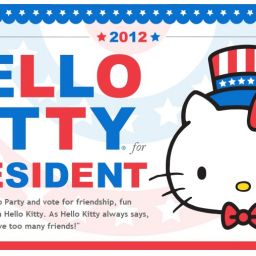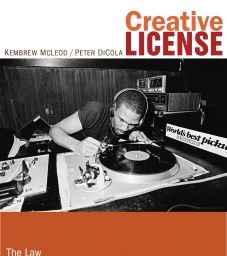Summary of review of OurSpace by Christine Harold: Highly suggested for purchase by libraries, scholars, and readers interested in the history, significance, and theory of culture jamming and other types of social cultural resistance to corporate ownership, but not best source of information for application of law to these practices.
Throughout the book, Harold shows her vast knowledge of culture jamming (defined as “an interruption, a sabotage, a hoax, a prank, a banditry, or a blockage of what are seen as monolithic power structures governing media and culture”). She divides out these different types of culture jamming into different chapters, and skillfully creates a cultural history of these practices, and successfully integrates communications theory (including Postman, Habermas, and rhetorical theory).
I found the chapter focusing on Adbusters and its type of culture jamming, primarily through parody of ads, especially interesting. It details how Adbusters by attempting to coopt and change corporate media advertising strategies created the branding of unbranding.
I was intrigued by the author’s personal reaction to Diesel Jeans’ marketing campaign pushing the idea of personal protest — but only allowed protest voices to be echoed back, never to be heard by another. I wish there would have been more space given over to how real people react to both the consumerist elements of media and the personal reasons for culture jamming, and I think that the sections on the Barbie Liberation Organization and Kembrew McLeod come closest to personalizing cultural jamming (see also Siva Vaidhyanathan’s writing).
The book falters in its analysis of intellectual property, confusingly blurring the lines between copyright and trademark, leading to a serious case of the “you’ve got your peanut butter in my chocolate, you’ve got your chocolate in my peanut butter”. For example, in analyzing a Starbucks icon parody, Harold melds her copyright / fair use analysis with the trademark implications. It would have been fine if she would state that for culture jammers and for the average member of the public there are no real-world distinctions between different types of intellectual property, and different elements of owned culture are equally worthy of remixing/appropriation. But unfortunately for both reusers and owners that is not what the law states, carving out the need for trademark owners to protect their property to keep it in ways that copyright owners don’t. An extended discussion of the present state of the difference between the social understanding of fair use and the legal standard of fair use would have vastly improved this section.
One last but major critique about the intellectual property section: I heartily doubt that readers of Judge Richard Posner’s Economic Analysis of Law (or his other writings) would agree with Harold that Posner’s view of the marketplace of ideas could be appropriately summarized as
the communal truths by which we live, are being subjected to the fickle whims of the market. This is an understandable and legitimate fear. (141)
As a final note about the content of OurSpace, I wanted to the book to discuss about how cultural jamming will impact the new world of social networking, as implicated by the title. Will culture jamming be easier? More difficult? How is it changing? How will Habermas’ idea of the public sphere work on social networking sites like MySpace or Facebook? Will it become more like the public square of days of old or more like modern malls, limiting tweens and teens?
One of the most important elements of what is missing from this book is not unique to this book, yet seems even more obvious here — a lack of discussion of how intellectual property, especially copyright, is handled internally within the body of the book. Why is the copyright page for this book about challenging corporate practices and the law so traditional– with the “all rights reserved. No copying without permission of the publisher” language, nary a mention of fair use? Why is the copyright owned, not by the author, but by the publisher, the University of Minnesota Press? Why are so many culture jamming images included in the book, such as all of the Adbusters adverts, “used with permission” of their copyright owner? How can Adbusters and the author who are critiquing the permissions-based allowance of remixing or (re-) / appropriation of culture, when they then participate and reinforce permissioning?
You can find where this book is owned in a library here and if interested in purchasing this book, the ISBNs are 9780816649549 0816649545 9780816649556 0816649553





